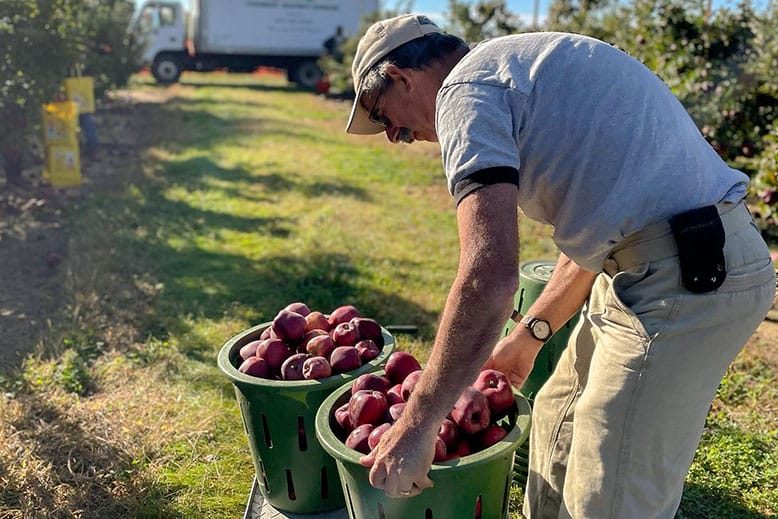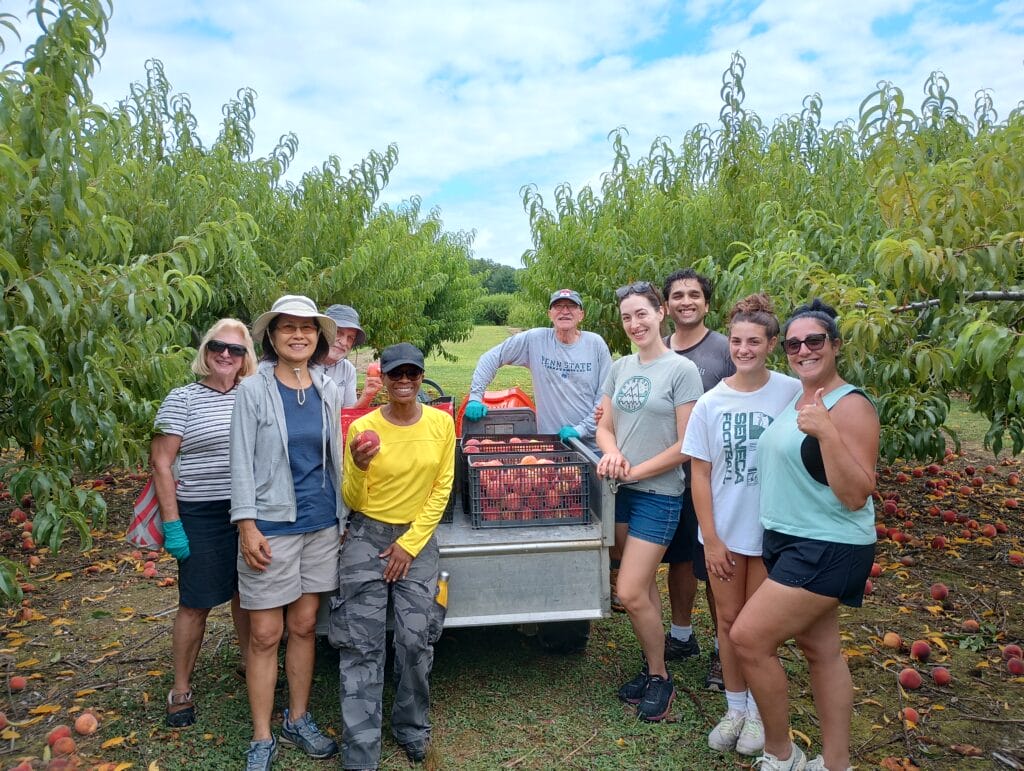
With nearly 10,000 farms across the Garden State, inevitably there will be leftover crops and not enough farmers or time to pick them. For nearly three decades, a New Jersey organization has been on a mission to save those thousands of pounds of spare crops and donate them to those who need them most.
Farmers Against Hunger (FAH), a Burlington County-based nonprofit, has been working as a bridge between the state’s agricultural community and hunger-relief organizations since 1996. The program works directly with farms across the state to set up times when volunteers can go onto the farm to glean (gather and pick leftover crops), before loading the produce onto their fleet of trucks, which will drop off hundreds to thousands of pounds of fresh food to organizations that feed those struggling with food insecurity.
“We were started by farmers. They noticed that fields of food were not all being used,” says program director Stacey Kennedy. “The farmers got together to think of a way to really piece together this beautiful fresh food that they’ve worked so hard to grow in the Garden State, and how that could get to people within their communities that were in need of fresh food.”

Anyone can volunteer to help out. Photo: Courtesy of NJAS Farmers Against Hunger Team
FAH, which is part of the New Jersey Agricultural Society and is based in Delran, has more than 200 farms across the state in its network and about 80 core farms it frequently works with. These farms reach out to FAH when they have a surplus of crops, then FAH sends its volunteers the gleaning details. There are typically three to five gleanings per week.
Volunteers have the opportunity to be a farmer for the day. Kennedy describes the volunteer experience as a “VIP gleaning and tour” of the Jersey farms they work on. In these private gleaning sessions, farmers take an average of 15 volunteers out to designated parts of their fields that are covered in crops that would otherwise go to waste, and the volunteers work hands-on for about two hours to gather as much produce as they can.
FAH has gleaned all kinds of produce, ranging from light crops like spinach and blueberries to heavier items like squash and watermelons.
“It’s always an adventure. There are no two pickings that are the same,” says Harry Cross, 68, a Little Egg Harbor resident who’s been volunteering for more than a decade.
Previously a farmer himself, Cross is passionate about reducing produce waste and feeding those in need. He typically gleans with FAH three or four times a year, and when he goes, he tries to fill up his own truck with crops left after the group gleaning, which he distributes to his own local food pantries.
“I try to go to pickings where the produce can be kept for a longer period of time and is very usable,” he says, noting that his favorite things to glean are apples and corn. “The last time I showed up to [one of the pantries] with apples, there was a big cheer among the people in line.”
[RELATED: Exploring the Future of Farming in New Jersey]
Anyone can volunteer with FAH. Currently, there are more than 500 active volunteers, and many have been participating for years. Some may only participate a few times a year, like Cross.
As for distribution partners, there are about 80 hunger-relief organizations, such as food banks and soup kitchens, to which FAH supplies free, fresh produce within two days of collection. Some organizations they regularly service are located in Camden, Mount Holly, Trenton and Highland Park; some of these are considered food deserts, which are areas that have limited access to affordable and fresh foods.
In addition to its main hunger-relief organizations, FAH takes produce to Camden’s Cathedral Kitchen, typically giving them hundreds of pounds of food each visit. Cathedral Kitchen, which has been in operation for 48 years, is incredibly valuable to Camden, the poorest city in the state. The kitchen serves dinner on weekdays and lunch on weekends, supplying anywhere from 450 to 650 meals a day.
“There are no supermarkets in Camden. Our guests are able to come here and get a hot, nutritious meal prepared by our team of chefs. It’s something they wouldn’t have access to anyplace else,” says Noreen Flewelling, Cathedral Kitchen’s senior development director.
Much of FAH’s donations go towards hot meals, packaged meals sent to after school programs, and Cathedral Kitchen’s market stand, where guests can select the produce they want. Flewelling says it empowers them to have a choice, since food kitchens often just give guests a bag with preselected items.
Other organizations with similar missions include AmpleHarvest.org, a West Milford-based nonprofit that works to reduce food insecurity. It has a national website where backyard gardeners can find local food pantries to which they can donate their excess harvest.
America’s Grow-a-Row, a Pittstown-based nonprofit, owns more than 400 acres of land across four farm locations, and its produce is picked by volunteers and distributed to hunger relief organizations across the country.
While organizations like these always welcome volunteers, helping the hungry doesn’t have to be done at a farm.
“Support your local food pantry,” Cross says. “If you can’t glean, just ‘glean’ out your kitchen and take some stuff over there.”
No one knows New Jersey like we do. Sign up for one of our free newsletters here. Want a print magazine mailed to you? Purchase an issue from our online store.



